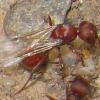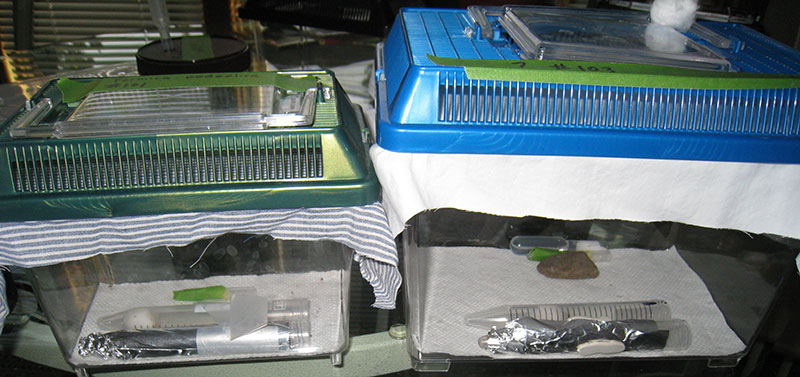My goal is to raise a colony of ants that can be used in a large formicarium on public exhibit. I captured some de-alates this summer, and after various newbie problems, I currently have two queens with nanitics:
Formica podzolica
Lasius sp. (not sure of this ID yet, I have a photo posted in the ID request section)
Right now, both are in test tubes, with the tube open, and inside a container that gives them a foraging area. The Formica colony just moved themselves from their original tube to a new one, and the workers are actively foraging in the foraging area. The second colony is farther behind, none of them have ventured out of the tube yet.
What advice can you knowledgable folks give me for getting from where I am, to a colony that can go into a large formicarium?
They are in a room that is in the upper 70s during the day, upper 60s at night. I'm not yet supplying any heat, but I probably should? If I heat them a bit, can I keep them growing all winter?
I read Crystal's caresheet for F. podzolica, which says they need hibernation. Will the colony really fail if they don't get this? If so, this is a show-stopper because I eventually need a year-round indoor exhibit. Will that be impossible with this species?
If I don't care about aethetics, what kind of setup can I use as the colonies grow? Can I continue to use multiple test tubes inside a foraging container, or will this not work for ramping up beyond a certain point?





















